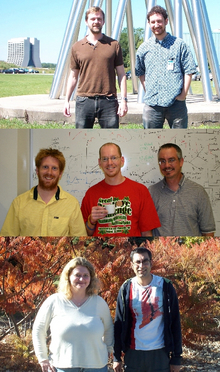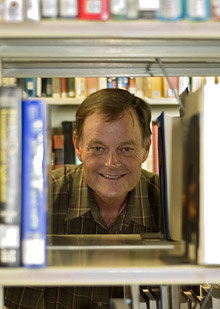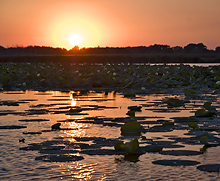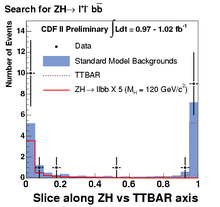 | Thursday, August 24, 2006 |
|
Thursday, August 24
Friday, August 25 Click here for a full calendar with links to additional information. |
|
Extended Forecast |
Secon Level 3 |
|
Thursday, August 24 -Minnesota Wild Rice w/Chicken -Tuna Melt on Nine Grain -BBQ Ribs -Chicken Casserole -Buffalo Chicken Wrap -Assorted Slice Pizza -Mandarin Chicken Salad |
|
Thursday, August 24 Dinner -Roasted Beet and Citrus Salad -Grilled Swordfish and Vegetable Kabobs -Lemon Scented Rice -Plum and Marzipan Strudel
Wednesday, August 30 |
| Fermilab Today is online at: http://www.fnal.gov/today/ Send comments and suggestions to today@fnal.gov Fermilab Today archive Hurricane Relief Page Fermilab Today PDF Version Fermilab Result of the Week archive Fermilab Safety Tip of the Week archive Linear Collider News archive Fermilab Today classifieds Subscribe/Unsubscribe to |
| FNAL physicist's passions merge in novel writing | |||
| In this new column, Fermilab Today will feature employee hobbies, interests and accomplishments outside the lab. | |||
| |||
|
Before Roger Dixon was a scientist, he was a writer. Each morning, in fact, the head of Fermilab's Accelerator Division types roughly 1,500 words of whatever may come to mind. "This writing thing is fundamental to me," Dixon said. "Science is constrained, but writing is a part of me that's completely free." Yet Dixon also cuts loose by cycling 21 miles before work, a hobby that built the foundation for his first novel.
The book stemmed from weekly journal entries--short stories Dixon wrote of his bicycling group from years ago. "I didn't think accuracy really had a place, so the writings were sort of a humorous spoof on life," Dixon said. After group members passed the entries on to friends and family, dozens of non-cyclists eagerly awaited his tall-tales. "That ultimately gave me the idea to make a novel." From Dixon's entries arose "...And We All Died Laughing," a 300-page epic adventure incorporating cyclists, space shuttles, comets bearing down on Earth, rodeo clowns and Native American spiritualism. "I had a contract to publish it, but the publisher went bankrupt," he said. "And because I felt its time had passed, I never pursued publishing it again." Dixon wrote a second larger-than-life science fiction novel, but never chased a contract because he disliked the ending. Because writing is something Dixon does "primarily for his own amusement," however, he is currently writing a popular science book on the subject of time.
While writing seems to run in his family, beginning with his great grandparents down through his daughter, Dixon joked that making a living from it does not. "There must be a defective gene being passed along that prevents us from making money in the writing profession," he said. "However, there is hope--it could be getting watered down by now."
|
|
Science Daily August 22, 2006: Astronomers Discover Rapidly Forming, Large Proto-disc Galaxies 3 Billion Years After Big Bang An international group of astronomers have discovered large disc galaxies akin to our Milky Way that must have formed on a rapid time scale, only 3 billion years after the Big Bang. In one of these systems, the combination of adaptive optics techniques with the new SINFONI spectrograph on ESO's Very Large Telescope (VLT) resulted in a record-breaking resolution of a mere 0.15 arcsecond, giving an unprecedented detailed view of the anatomy of such a distant proto-disc galaxy. "We have been able, for the first time, to obtain well resolved, two dimensional images of the gas motions in distant star forming galaxies, whose light has traveled more than 11 billion years to the Earth," said Reinhard Genzel, lead author of a paper in this week's issue of Nature in which these results are presented."
|
|
Using your brain to find the Higgs |
||
| ||
|
No one ever said that finding the Higgs boson at the Tevatron would be easy.
The Tevatron accelerator performance must be excellent in order to provide
enough data to physicists. But the real difficulty is that the Higgs signal
events measured in the detectors appear at first glance identical to
background events. For every event where a Higgs is produced along with a Z
boson, there are a hundred similar events originating from gluons produced
with a Z boson.
That is where the brain comes in. The brain holds a web of billions of neurons, each one connected to other neurons by thousands of passageways. Information is bounced around these passageways, and the neurons are collectively able to learn and later decide, for instance, whether a particular fruit is an orange or an apple. Scientists have long been able to mimic this type of decision using computers with what is called an artificial Neural Network (NN). Now physicists at CDF are using NN's to distinguish Higgs-like events from non-Higgs events with a much higher success rate than achieved using the standard method of reconstructing the mass of jets produced from Higgs decay. This has an effect similar to a company program which matches employees' charitable contributions: the 1.0 fb-1 of data analyzed with the NN is as powerful as 2.5 fb-1 analyzed by this less sophisticated technique. The accelerator division is striving to reach the 8 fb-1 design goal of data delivered by the Tevatron. By improving analysis techniques in order to glean the maximum information from the data available, physicists looking for the Higgs are making these efforts pay off more than two-fold, fortifying the path to Higgs discovery. | ||
 |
||
| Above, top row: Ben Kilminster and Jonathan Efron, both from Ohio State University; middle row: Brandon Parks, Richard Hughes and Brian Winer, all from Ohio State University; bottom row: Beate Heinemann and Andy Mehta, both from Liverpool University. *Graphic at top: This plot shows a signal-enhanced slice of this Neural Network. The horizontal axis is the NN discriminant which is trained to place Z+Higgs events at a value of 0 and top-antitop (TTBAR) events at a value of 1. The blue distribution is the total Standard Model prediction, shown with its TTBAR contribution in dotted gray. The black dots indicate the actual data. The red line is what would be expected for ZH scaled by a factor of 5. | ||
| Result of the Week Archive
|
|
Blood drive Fermilab's blood drive will be held on August 28 and 29 from 8:00 a.m. to 2:00 p.m. On August 28, the drive will be held in Wilson Hall's ground floor NE training room. On August 29, the drive will be held in the Industrial Center Building east ground floor (follow the signs). Appointments can be scheduled on the web or by calling Margie at x3411 or Lori x6615. |
| Security, Privacy, Legal | Use of Cookies |


